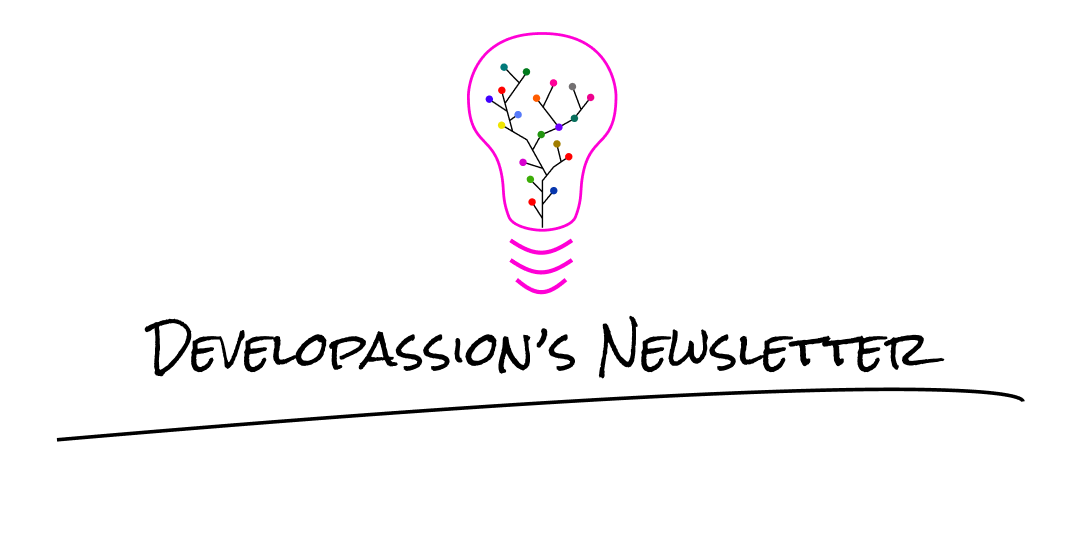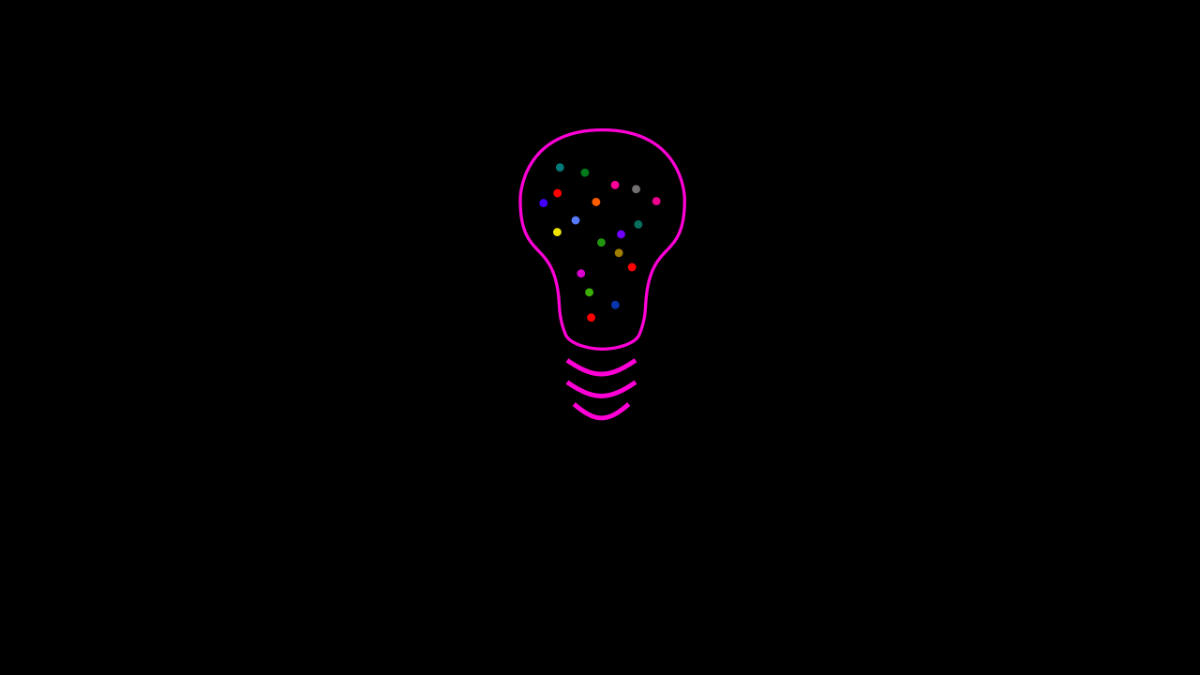|
As you learn and grow, you'll accumulate more and more knowledge. While each piece is important, the relationships between ideas is, at least, as important as the ideas themselves. In this post, I want to discuss various ways in which you can connect ideas together. IntroductionKnowledge does not exist in isolation. It exists at the interconnection between ideas. Recognizing this fact is the first step towards better learning and understanding. From there, it is obvious that building a knowledge base where each idea lives alone in its corner doesn't make much sense. Such a knowledge base is dry and provides little value. But what do good knowledge bases look like? Let's find out! What solid knowledge bases have in commonA solid knowledge base is one where information is easy to Locate and to Identify (i.e., the L and I of the LIFT Principle). But that's just the tip of the iceberg... Beyond organization and good naming, another fundamental element that differentiates good and great knowledge bases is the presence of links and backlinks between the different pieces. Links transform dry knowledge bases into valuable Knowledge Graphs (KGs). It's true for personal knowledge, but also for teams and organizations. Why? For different reasons... In addition, solid knowledge bases have a categorization system that goes beyond containers (e.g., folders) and files/notes. Surfacing knowledge is key in a knowledge base. When you categorize the information it contains, you enable others (and your future self) to explore the content in different ways. This helps in many ways. For instance, it helps to discover topics and concepts that you may not have stumbled upon otherwise. Categorization is always imperfect (and unstable!), but it is still valuable. In a similar vein, Maps of Content (e.g., indexes) provide yet additional means to explore the content. Links and backlinks enable navigating between ideas and concepts. Links and backlinks can directly link ideas together, but they can also do so indirectly (i.e., through other pieces). Direct links make connections obvious, but indirect links can also be very useful, as they can not only connect loosely coupled ideas together, but also provide additional information and/or context. This helps to build up knowledge about a specific domain and/or related ones. When you dive into a solid knowledge graph, you basically dive into a different mind, hopefully containing more information than yours has. In my previous team, I wrote more than 800 pages of documentation about various systems, their usefulness, usage, configuration, dependencies, links and underlying concepts. There was compounding value in creating that knowledge graph. It helped newcomers and experts alike, and still proves very valuable today. Categories (e.g., tags), Maps of Content, Links and Backlinks all increase the "explorability" of the content. It's not only about increasing the connectedness of the graph through different layers of connections, but also about enabling serendipity, the "luck" factor, while exploring the ideas. The ability to search for specific content in a knowledge base is also very useful, as it enables quickly finding what you're looking for. As a side benefit, related search results can also uncover useful and interesting content that you might not have stumbled upon otherwise. Last but not least, the novel ability to discuss with a knowledge base (e.g., thanks to Large Language Models) brings even more power to knowledge base users. For instance, using the Smart Connections plugin for Obsidian, I am now able to discuss with all my notes, which helps me dive even deeper into the wealth of knowledge I have accumulated over the years. By the way, the same plugin also finds potential connections between notes (hence its name!) by looking at their similarity (I share an example later in this article). Overview of the different ways to connect ideasIn the previous section, I've described different elements that transform knowledge bases into valuable knowledge graphs. Let's visualize these elements:  This diagram covers different ways of connecting ideas together In the diagram above, there are two main ideas represented by notes in a Knowledge Base: A and B. A has a direct link to B (e.g., a Markdown link from A to B). That link makes it easy to navigate from A to B. Assuming that the system has support for backlinks, the link from A to B inherently creates a backlink that you can use to navigate from B to A. In addition to the direct link, A and B are also connected by a third note, which might provide additional information (or context) about the link between A and B. That note is also part of the whole system. There is also a Map of Content (MoC) that provides links to various notes that are somewhat related. In this example, it points to both A and B. Both A and B also include the same Tag T, which provides yet another way to find those elements of the graph. Moreover, all the notes are part of the same "organization system". They're all stored together in some form. Thanks to this, those notes can all be found by using the search capability of the system, which can usually find elements by their name or title, their contents, their location, their tags, etc. Last but not least, modern systems also enable "discussing with" the contents of the Knowledge Graph. This adds yet another dimension to leverage the knowledge you've accumulated. Each link, backlink and tag in your Knowledge Graph creates and/or strengthens a layer of interconnected notes. Each increasing the value of the overall graph. And there's more. For instance, using tools such as Obsidian, you can also create useful visualizations, which provide yet another avenue to connect ideas together. For instance, all the notes in the following canvas could point to different notes and help understand the links between their ideas:  Example canvas to help visualize ideas in a powerful way Knowledge Graph ExampleLet's turn the diagram of the previous section into a concrete example. I'm creating this with Obsidian, as it is my favorite Personal Knowledge Management tool. Here's Idea A, stored in a file called "Idea A.md" within some folder: ---
tags:
- t
---
# Idea A
I point to [[Idea B]]
As you can see, the note has the tag and contains a link to Idea B. Here's Idea B, stored in a file called "Idea B.md" within the same or a different folder: ---
tags:
- t
---
# Idea B
I am idea B
Idea B has the same tag, thus both can be found by searching for that tag, but Idea B does not have a forward link to Idea A. Instead, it has a backlink, which can be uncovered by using a knowledge management tool such as Obsidian: In my case, Idea B is also linked to by my daily note, which is an idea that I have explored in another article: Thanks to this, I can navigate from Idea B to Idea A easily. If another note mentioned "Idea B" without linking to it, it would also appear beneath the "Unlinked mentions" section, which is also valuable. The note about A and B is stored in a file called Note about A and B.md: ---
tags:
- ...
---
# Note about A and B
This note explains the relationship between [[Idea A]] and [[Idea B]]...
This enables providing more context and even to link to other elements of the Knowledge Graph. Finally, the Map of Content is stored in a file called "MoC about T": ---
tags:
- type/moc
---
# MoC about T
This Map of Content discusses #t.
Useful notes in this context:
- [[Idea A]]
- [[Idea B]]
It provides links to various notes related to the topic "T" (i.e., the tag t). Using the Smart Connections plugin in Obsidian, I can quickly notice the relationship between Idea A and Idea B, but also with other ideas in my knowledge base: And this is just a toy example. The overall value of a Knowledge Graph compounds. Here's a screenshot of my current Personal Knowledge Graph in Obsidian:  My Personal Knowledge Graph It's not practical to explore it this way, but I can easily visualize the relationships between ideas:  What's currently on the top of my mind Moreover, by linking knowledge with time, I can also quickly visualize what has evolved over time:  What I've added/changed in 2023 Going furtherIf you're curious to learn more, then check out the Obsidian Starter Kit, the Obsidian Starter Course, and the Knowledge Worker Kit. The Starter Kit and Course give you a head start to better manage your knowledge, while the Knowledge Worker Kit helps you become a top knowledge worker.
Knowledge Worker Kit and community (BETA)
Who is this for?You are a Knowledge Worker or Lifelong LearnerYou feel disorganized, unproductive, or overwhelmedYou don’t know how to go to the next levelYou want to learn from someone who’s always on top of thingsI have a proven track record of delivering at work and with my side projects. I have worked as a software developer, team leader, project manager, IT architect, information management specialist, CTO, founder, coach, and solopreneur. I have also written and published 3 books, 300+ articles, courses, YouTube videos, digital products, manage communities, and more! And I did it all with a busy life and kids. My personal system works and helps me achieve my goals consistently.You want a solid system that scalesBeing a Knowledge Worker today is much more challenging than it ever was. Getting started ain’t easy, and there are many traps to fall into. Spare yourself some time and benefit from my experience and battle-tested system. I’ll share everything I know with you: my approach, my systems, my routines, templates, guidance, and more! My mission is to help you avoid the pitfalls of Knowledge Work and empower you through technology.After you finish exploring the guide, you’ll have:Clarity in your life and an obvious path forwardSolid habits, routines, and systemsClear ideas about how to “manage” your careerAn effective approach to learning new thingsSolid knowledge management and personal organization systemsKnowledge about how to organize, plan, control, and manage projects (large and small!)A toolkit to prioritize workA system to manage your tasks at scaleEffective means to focus your attention and manage your timeWork methods that will propel your career forwardWhat is this?I’ve been passionate about information, knowledge management, learning, personal organization, PKM, and productivity for more than 20 years. As an author, blogger, knowledge worker, entrepreneur, coach, and father of 3 kids, I needed effective solutions to be and stay organized, focused, and productive. The Knowledge Worker Kit includes everything I know about these topics, and more!What’s included?WARNING: The Knowledge Worker Kit is in BETA. The content will be added and expanded over time. If you buy access now, you’ll benefit from a lower price. The product is already available so that I can find early adopters and get as much feedback as possible in order to make it great for everyone.If you buy access to the Knowledge Worker Kit, you’ll get:The user guideAll the templates and guidanceLifetime access to the private community for support and knowledge sharingLifetime access to all community events (meetups, workshops, knowledge-sharing sessions, invited talks, etc)Ask Me Anything (AMA) Q&As with meIn addition, you’ll also get free access to all future updates. Over time, I’ll continue expanding the kit with new ideas, techniques, systems, templates, and more!What’s in the user guide?The user guide is a growing and evergreen knowledge base. It includes detailed explanations covering a wide range of topics that all Knowledge workers should explore:01. Clarity: values, behaviors, goals, non-goals, priorities, and intentions02. Habits, routines, systems, processes and methods03. Career Management and Anticipation04. Learning05. Projects Knowledge Management and Journaling06. Projects Organization07. Planning and Prioritization08. Task Management09. Focus, Attention, Time Management and Action10. Personal Development11. Control: periodic reviews, progress tracking, course-adjustment12. Personal Organization13. WorkThe user guide is a Notion space including tons of articles, how-to guides, guidance, and links to useful templates and resources.You will get to explore the content at your own pace, and to focus on what is useful to you right now, as each section is actionable on its own.Evergreen ContentThe Knowledge Worker Toolkit is going to expand over time. Day after day, week after week. Buy it once, and you will have access to all future updates.Overview of the main topics01. ClarityThis part explores key elements that help bring clarity to one’s life:NeedsValuesPrinciplesGoalsPrioritiesEach of those is important to know what matters, what has value, and what to focus on.02. Habits, routines, systems, processes and methodsThis part explores the base elements of productivity systems:Habits and routinesSystems, processes, and methodsThose are key to building an “effortless” life, requiring as little willpower/motivation as possible to make things happen.03. Career Management and AnticipationThis part focuses on career management: its importance, your responsibility, the mindset you need to acquire, and all the related ideas.04. LearningThis part shares ideas about how to…Learn how you best learnLearn more effectivelyExplore new topicsResearchFilter informationLeverage AI and LLMs…05. Personal Knowledge Management (PKM) and JournalingThis part explores how to collect, organize, and link all your knowledge and information. It explores the main concepts of PKM, note-taking, note-making, tools of the trade, and structures/tips to help you keep everything useful, manageable, and maintainable as your knowledge base grows.It also introduces journaling and how to approach it to support your whole life.06. Projects OrganizationThis part focuses on how to organize projects and their information in a way that enables you and your teams to make focused progress.It shares ideas about how to organize project information, how to document projects, how to organize backlogs, etc.07. Planning and PrioritizationThis part focuses on how to plan projects and tasks, how to deal with deadlines, and how to prioritize work using various methods.08. Task ManagementThis part focuses on task management for personal and professional projects. It explores ways to keep tasks under control, how to organize personal work, and how to make the link between your different backlogs and your day-to-day life.09. Focus, Attention, Time Management and ActionThis part focuses on how to make things happen every single day, regardless of whatever is going on in your life. It’s all about techniques, tips & tricks, and tools to help you better manage your time, focus, and attention in order to ACT.10. Personal DevelopmentThis part explores important aspects of Personal Development that can make a big difference in a Knowledge Worker’s life. A sane mind in a sane body.11. ControlThis part is dedicated to control. How to control your progress, your trajectory, your projects, etc. And also, how to adjust course when things don’t go as expected.12. Personal OrganizationThis part helps better organize yourself and your information. It shares “zen” techniques you can use to remain organized, independently of how much information you have to juggle with.13. WorkThis part is all about WORK. How to do the work, how to improve your attitude, your results, and your recognition. It also dives into how to better collaborate with others to achieve your goals and those of your company/group.
Gumroad
ConclusionIn this article, I've covered different means you can use to connect ideas together and create valuable Knowledge Graphs for yourself and your teams. These concepts apply to Personal Knowledge Management and Enterprise Knowledge Management alike. Connecting ideas together is transformative. Hopefully, this will give you some ideas about how to increase the value of the Knowledge you capture and share.
|










